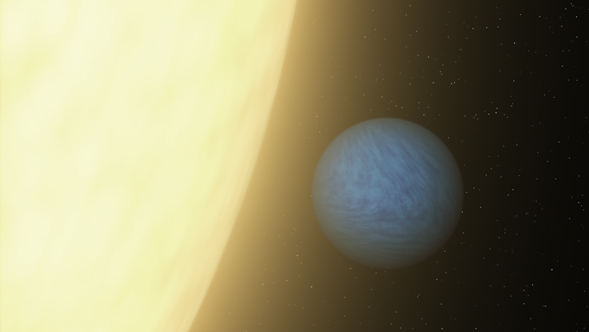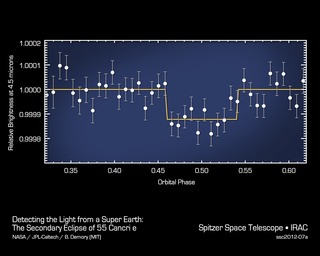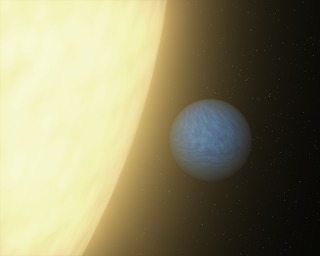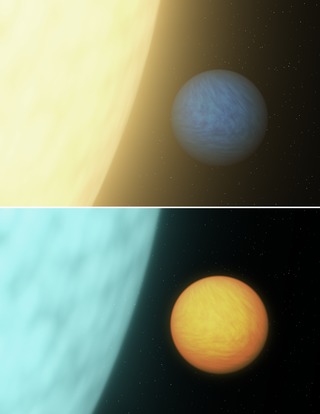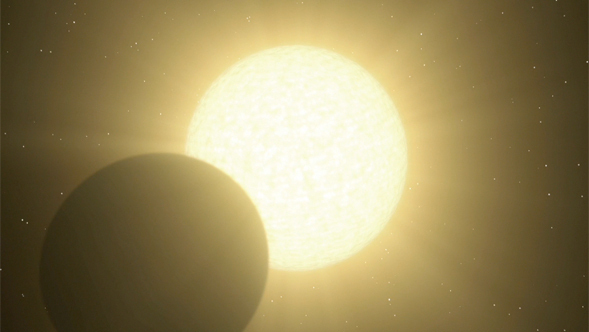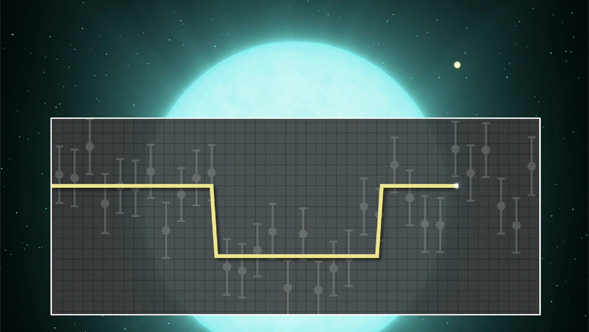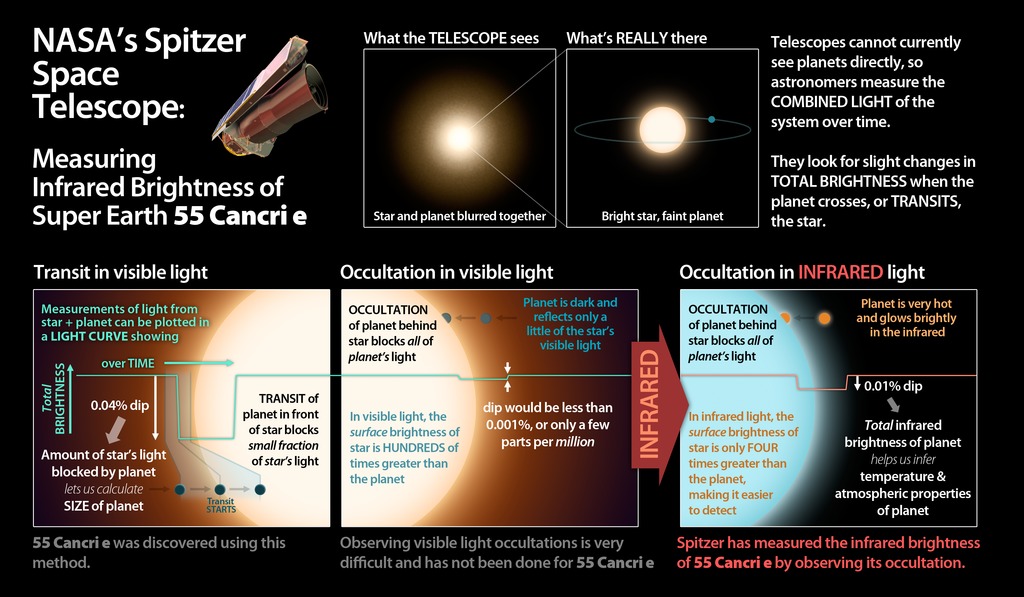
Credit: NASA/JPL-Caltech/R. Hurt (SSC)
Artwork • May 8th, 2012 • ssc2012-07d
ssc2012-07d
This graphic illuminates the process by which astronomers using NASA's Spitzer Space Telescope have for the first time detected the light from a super Earth planet.
The planet 55 Cancri e orbits very closely to its star, and no current telescope can make an image of it separate from its star. Instead astronomers watch the combined light of the system over time, looking for slight drops in the total light that hint at the existence of planets.
Planets like 55 Cancri e are first identified when they "transit," or pass in front of, their star. This blocks a portion of the star's light that is proportional to the size of the planet.
Detecting the light from the planet is much harder. When the planet passes behind its star (an "occultation"), there is a slight dip in the total light that corresponds to the light from the planet itself. In visible light this dip is expected to be tiny, only a few parts per million. In infrared light the thermal glow of the planet is much brighter, making the occultation easier to detect.
This infrared occultation has been detected by Spitzer, giving astronomers the first-ever measurement of the light from such a small planet (about twice the size of the Earth). Such measurements help astronomers determine conditions on the planet itself.
About the Object
- Name
- 55 Cancri e • 55 Cnc e
- Type
- Planet > Special Cases > Transiting
- Distance
- 41 Light Years
